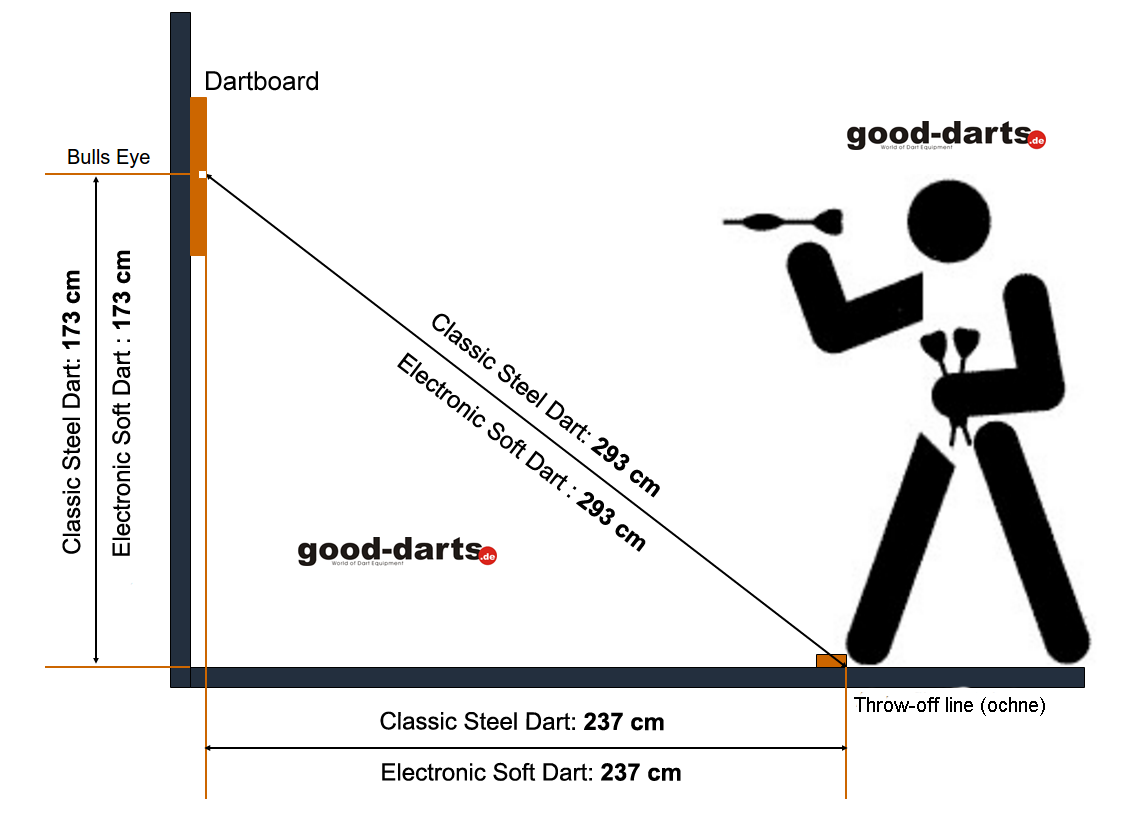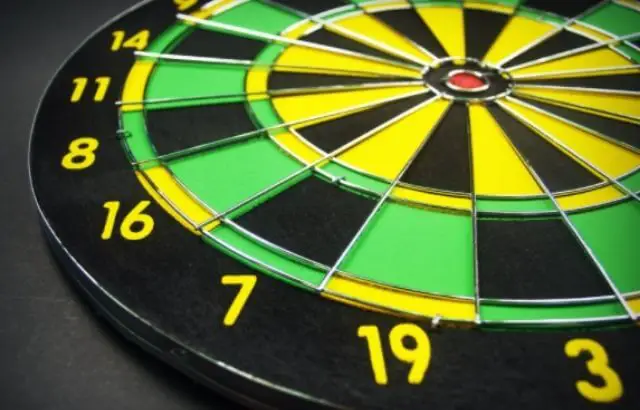Regulation Distance From A Dartboard
The regulation distance from a dartboard is an essential factor to consider when setting up your own dartboard at home or preparing for a professional darts game. Whether you are a beginner or a seasoned player, knowing the correct distance is crucial for ensuring fair play and optimal performance. In this article, we will delve into the specifics of the regulation distance, provide step-by-step instructions on setting up your dartboard, and address some frequently asked questions.
Setting Up Your Dartboard: A Step-by-Step Guide
Before we discuss the regulation distance, let's first understand how to properly set up your dartboard. The following steps will guide you through the process:

Step 1: Find a suitable location - Start by selecting a suitable location for your dartboard. Ensure that there is enough space around the board for players to comfortably throw darts without any obstructions.
Step 2: Measure the height - Use a tape measure to measure the height from the ground to the center of the bullseye. The regulation height for the center of the bullseye is 5 feet 8 inches (or 173 cm). This standardized height ensures a consistent playing experience for all players.
Step 3: Mark the center - Once you have measured the correct height, mark the center point on the wall or surface where you plan to mount the dartboard. This center mark will help you align the dartboard accurately.
Step 4: Measure the throwing distance - The throwing distance is the distance between the front toe line and the face of the dartboard. For standard steel-tip darts, the regulation distance is 7 feet 9.25 inches (or 237 cm) measured horizontally from the face of the dartboard. This distance is vital for ensuring fair play and standardizing the game for all players.
Importance of the Regulation Distance
Why is the regulation distance so crucial in the game of darts? Let's explore the importance:

Ensuring Fair Play
The regulation distance ensures fair play for all participants in a darts game. By standardizing the throwing distance, every player has an equal opportunity to showcase their skills without any undue advantage or disadvantage.
Consistency in Performance
By practicing and playing at the regulation distance, players can develop muscle memory and consistency in their throw. When moving from one dartboard to another, they will be able to quickly adapt and maintain their performance.
Preventing Injury
Playing darts at the proper distance not only enhances fairness but also aids in preventing injuries. When players stand at the correct distance, they are less likely to be hit by stray darts and reduce the risk of accidents.
Frequently Asked Questions
1. Can I play darts at home without adhering to the regulation distance?
While it is possible to play darts at a shorter distance for recreational purposes, sticking to the regulation distance provides a more authentic experience and prepares you for competitive play.
2. Is the regulation distance the same for soft-tip and steel-tip dartboards?
No, the regulation distance varies for soft-tip and steel-tip dartboards. The standard throwing distance for soft-tip darts is 8 feet (or 244 cm), whereas for steel-tip darts, it is 7 feet 9.25 inches (or 237 cm).
3. How can I ensure that my dartboard is properly mounted at the regulation height?
Using a tape measure and following the instructions mentioned earlier, you can measure and mark the regulation height accurately. Take your time during the setup process to ensure the dartboard is mounted securely.
4. Can I use the regulation distance for practicing at home?
Absolutely! Practicing at the regulation distance at home can significantly improve your skills and help you perform better when playing in tournaments or with friends. Consistent practice will also enhance your muscle memory and throwing technique.
5. Are there any specific regulations for dartboard height?
Yes, there are regulations for dartboard height. The center of the bullseye should be positioned exactly 5 feet 8 inches (or 173 cm) above the ground. This height ensures consistency in gameplay and a level playing field for all participants.
Now that you have a clear understanding of the regulation distance, take your darts game to the next level by setting up your dartboard using the guidelines provided. Remember, practice makes perfect, and playing at the correct distance is a crucial aspect of mastering the game of darts.
Happy darting!
Darts Tábla Magasság & Távolság: A Hivatalos Darts Mérések | Ottima
 Image Source : ottima-power.com
Image Source : ottima-power.com 22 What Is The Regulation Height Of A Dartboard Full Guide
 Image Source : pgdtaygiang.edu.vn
Image Source : pgdtaygiang.edu.vn Dart Board Measurements - The Millennial Mirror
 Image Source : themillennialmirror.com
Image Source : themillennialmirror.com dart darts dartboard regulations
How Far Do You Stand From The Dart Board? | Get Best Indoor Games
 Image Source : indoorgameszone.com
Image Source : indoorgameszone.com dartboard distance far stand into meters discussed remember account ve around take table before wall two
Regulation Dart Distance Sales Cheap, Save 69% | Jlcatj.gob.mx
 Image Source : www.jlcatj.gob.mx
Image Source : www.jlcatj.gob.mx Dartboard Height And Hanging Instructions | Dart Board Wall, Dart Board
 Image Source : www.pinterest.ca
Image Source : www.pinterest.ca dartboard hanging dart board height darts instructions cabinet soft steel wall setup tip hang dartworld boards game tips protector cricket
Regulation Dartboard Height And Distance - How To Play Darts | Hanging
 Image Source : www.pinterest.com
Image Source : www.pinterest.com board darts dart distance dartboard height floor regulation hanging wall high play game tip room official standard backboard hang soft
Latest Regulation: Dartboard Regulation Height And Distance
dartboard darts cabinet regulation diameter surround bauen printyourbrackets dardo jogo swick selber backboard heights 1727 idées plein décoration partyraum dardos
Regulation dart distance sales cheap, save 69%. Board darts dart distance dartboard height floor regulation hanging wall high play game tip room official standard backboard hang soft. Darts tábla magasság & távolság: a hivatalos darts mérések. Dartboard darts cabinet regulation diameter surround bauen printyourbrackets dardo jogo swick selber backboard heights 1727 idées plein décoration partyraum dardos. Dartboard hanging dart board height darts instructions cabinet soft steel wall setup tip hang dartworld boards game tips protector cricket